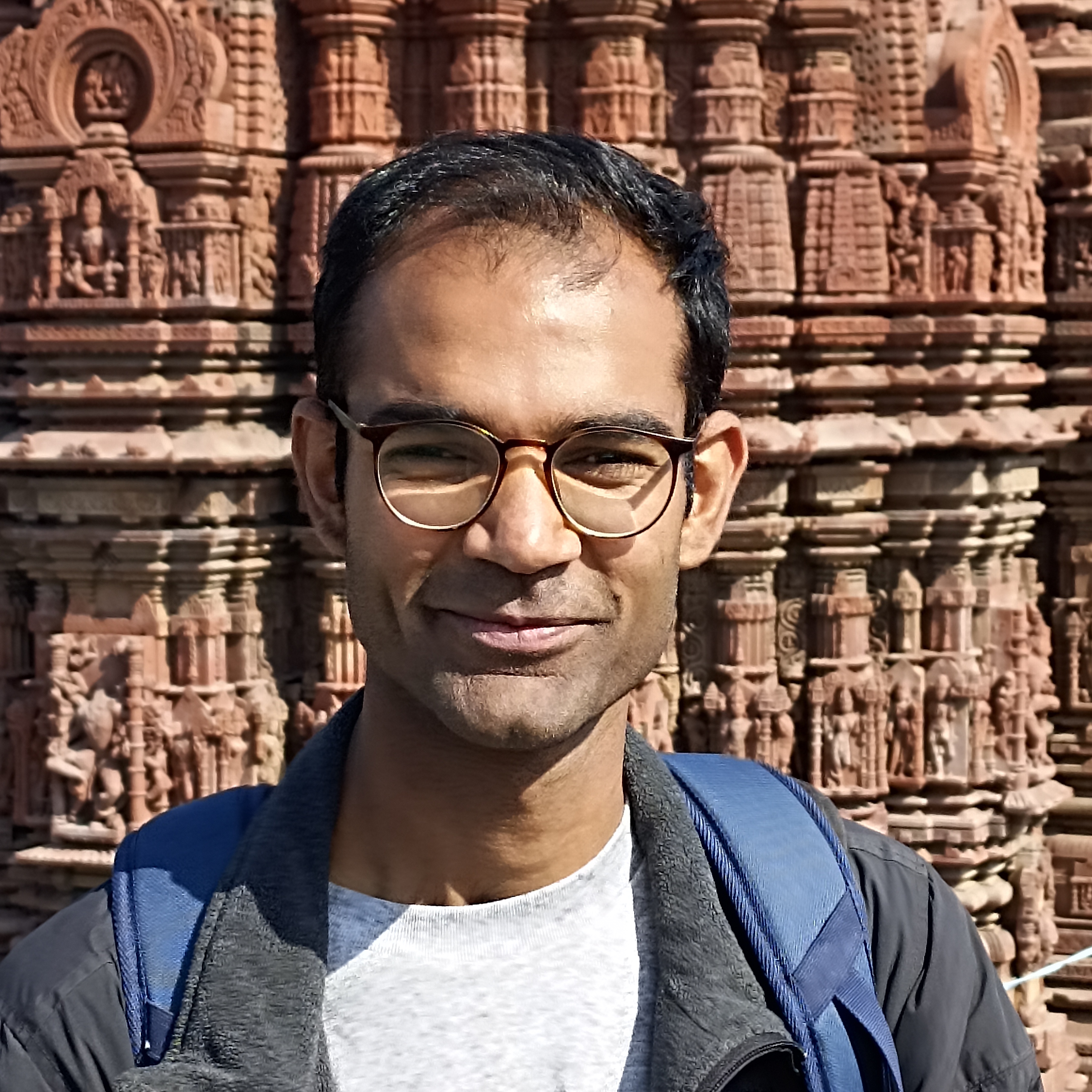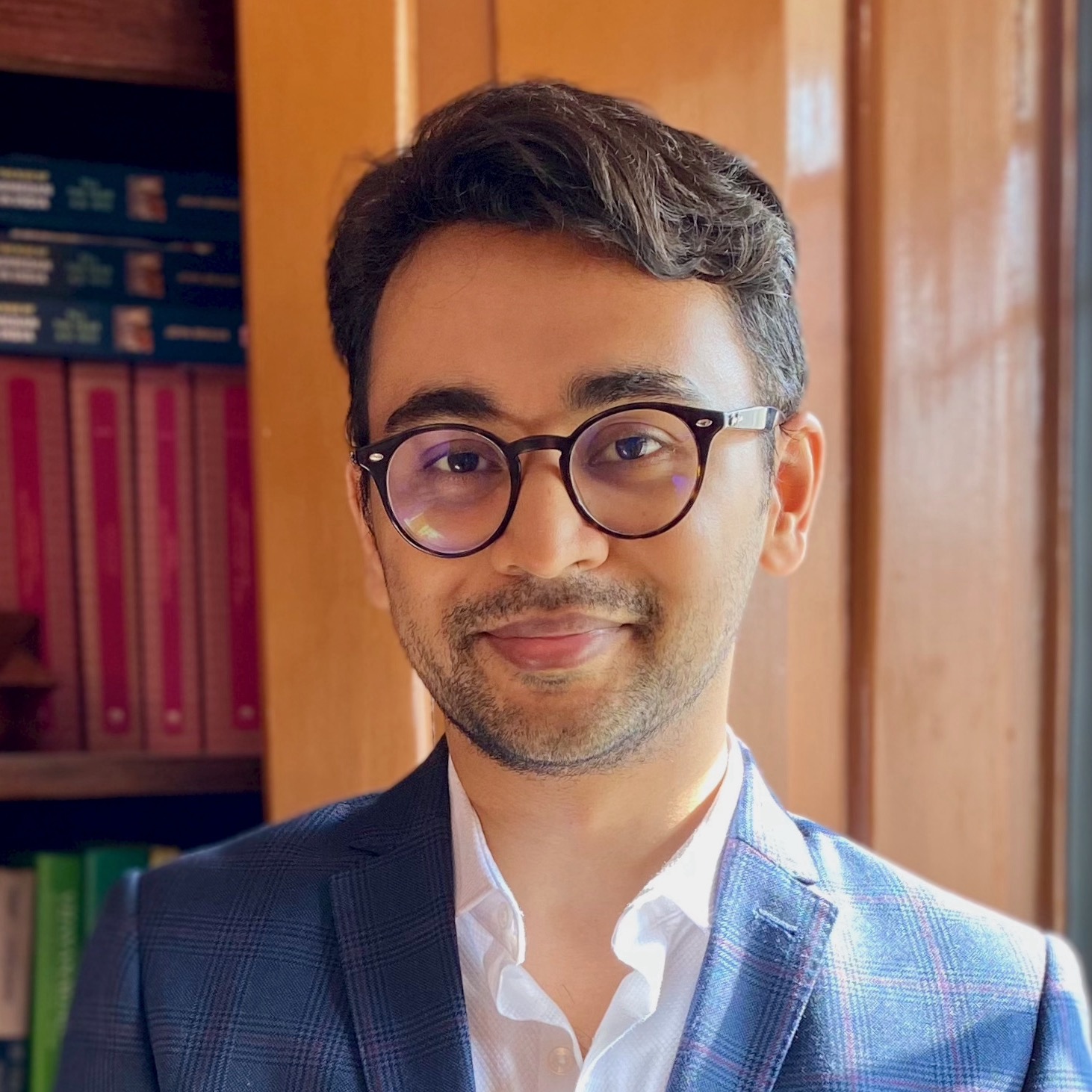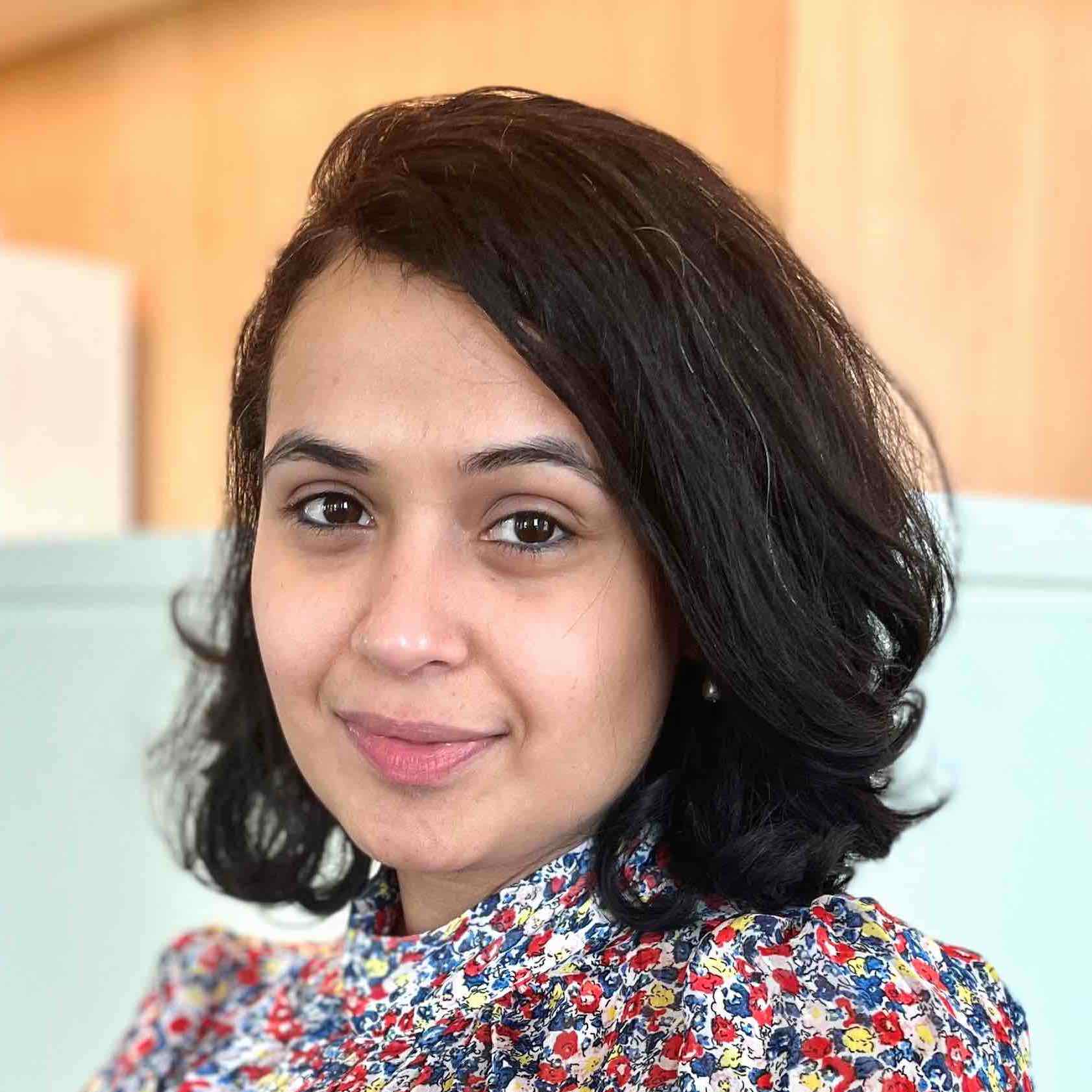2024 AWARDEES
Award Ceremony & Lectures: Wed, Apr 17 | 9 -11 am PST | On ZOOM
Prize Announcement
The UC Berkeley South Asia Artist Prize for 2024
 JANHAVI KHEMKA
JANHAVI KHEMKA
MFA, Art Institute of Chicago
Born in Varanasi, India, Chicago based Janhavi Khemka approaches acoustics through woodcut printmaking and experimental installations composed of animation, sound, performance and vibratory material.
Growing up, Khemka’s late mother encouraged her to speak in Hindi, resulting in an emphasis on lipreading in a hearing-speaking world. Shortly after she lost her mother to cancer, Khemka searched for ways to imprint her experience of the ‘real’ world. Activating her sensory capacities through touch, taste, smell and the visual, Khemka attended Santiniketan (2015-2017) interjecting a lineage of largely male master printmakers with conceptual wit and an astute awareness of the limits of printmaking. Khemka moved to Chicago to complete her Masters at the School of the Art Institute, finding herself gravitating toward animation, sound design and performance, activating works on paper through sound and bodily intervention. Developing immersive works that splice together the two and three dimensional, she invites her viewers to locate their inner assumptions and aural subjectivities within the strange and otherness.
Slipping between imposed identities like, ‘disabled’, ‘marginalized’, ‘immigrant’ - Khemka transcends ineffectual terms, attuning herself instead to the possibility of listening to materials she works within. For her, it becomes fictional necessity to ensures her politics are not foreclosed nor erased, theoretically and conceptually.
Janhavi’s recent exhibitions at Comfort Station and SITE Student Galleries, Chicago, IL, have received critical attention. She has also recently been awarded fellowships at KALA Art Institute Residency, Berkeley (CA) and the 3Arts/Body of Work Residency, between UIC and the MCA Chicago. She has worked closely with Japanese print maker Paul Furneaux in Edinburgh, UK, and has recently earned the Lalit Kala Akademie Award for her installation ‘Sapna’, in 2022.
Read more about Janhavi Khemka HERE
The Prize Committee: Al-An deSouza (University of California, Berkeley), Nidhi Gandhi (San Jose Museum of Art), Padma Maitland (Asian Art Museum), and Asma Kazmi (University of California, Berkeley)
The UC Berkeley South Asia Art & Architecture Dissertation Prize for 2024
 SAARTHAK SINGH
SAARTHAK SINGH
Institute of Fine Arts, New York University, 2024
Dissertation Title: Places of Piety, Sites of Sovereignty: Architecture and urbanism in medieval Malwa, c.1050–1450.
Advisor: Finbarr Barry Flood
Dissertation Abstract: This dissertation charts the constitutive role of architecture in the religious, political and urban life of a medieval town, in the central region of India historically known as Malwa and in a pivotal period of development from the eleventh to fifteenth centuries. Its centrepiece is a temple complex at the heart of Udaypur, Madhya Pradesh, founded in 1080 CE and now the only surviving imperial monument of the Paramāra dynasty (c.972–1305). Against the present isolation, historic damage and scholarly separation of such monuments from their spatial and social contexts, this study offers a first systematic analysis of Udaypur’s architectural ensemble and epigraphic corpus in Sanskrit, Persian, and old Hindi, which reveals the enduring importance of this place of pilgrimage, theatre of power, urban centre, and repository of events, memories, and identities until recent times. Extending the scope of art historical inquiry from the monumental core to its dramatic landscape of fortress hills and fertile plains, the dissertation makes a case for viewing the topographic arts of water management, fortification, and town-planning as integral parts of the urban whole. A multiscalar, interdisciplinary approach to buildings, texts and landscapes anchored within a larger ecosystem thus draws attention to places of piety, ceremony, and ordinary activity beyond the focal site of sovereignty. Ultimately, the dissertation argues for a more capacious understanding of architecture’s ability to address, affect, and act upon diverse audiences over time, and to thus furnish nuanced insights into the lived realities and layered complexities of human experience.
Read more about Dr. Singh HERE.
The Prize Committee: Sugata Ray (Chair, University of California, Berkeley), Susan Bean (Independent Scholar + Curator), Jinah Kim (Harvard University), and Sonal Khullar (University of Pennsylvania).
2023 AWARDEES
Award Ceremony & Lectures: Wed, Apr 19 | 12 -2 pm PST | 10 Stephens Hall
Prize Announcement (NOTE CHANGE IN TIME)
The UC Berkeley South Asia Artist Prize for 2023
 BHASHA CHAKRABARTI
BHASHA CHAKRABARTI
MFA, Yale School of Art
Bhasha Chakrabarti (b. 1991, Honolulu, HI) graduated with an MFA in Painting and Printmaking from the Yale School of Art in the Spring of 2022. The artist has exhibited in solo and group shows at Jeffery Deitch (New York & Los Angeles), Hales (New York), Experimenter (Kolkata), M+B (Los Angeles), Museum of Art and Photography (Bangalore) and Lyles & King (New York). Chakrabarti is the recipient of the South Asia Artist Prize (SAAI) awarded by University of California, Berkeley. She was a semi-finalist in the Smithsonian’s 2022 Outwin-Boochever Portrait Competition and was awarded a Beinecke Research Fellowship in 2021 and the Fountainhead Residency in 2020. Her works have been written about in The New York Times, Hyperallergic, Artsy, Ocula, and The Art Newspaper. Bhasha Chakrabarti currently lives and works in New Haven, CT. See Bhasha Chakrabarti's work HERE
The Prize Committee: Asma Kazmi (Chair, University of California, Berkeley), Al-An deSouza (University of California, Berkeley), Siddhartha V. Shah (Amherst College), and Padma Maitland (California Polytechnic State University).
The UC Berkeley South Asia Art & Architecture Dissertation Prize for 2023 (RECIPIENT 1)
 SHIVANI SUD
SHIVANI SUD
Department of History of Art, UC Berkeley, 2022
Dissertation Title: Painting, Print, and Photography: World-Making in Jaipur, ca. 1780-1920.
Advisor: Sugata Ray
Dissertation Abstract: From its establishment in 1727, Jaipur, the Kacchvaha dynasty’s capital city, was an important commercial center, intellectual hub, pilgrimage site, and locus of artistic experimentations. Despite the cosmopolitan ethos of this dynamic urban center, regional Indian painting has been read as a provincial artistic practice that upheld local religious and aesthetic ideals. The introduction of new technologies of art such as print, photography, and architectural drafting has signified, for scholars, the dissolution of a seemingly homogenous painting tradition in Jaipur by the late 19th century. This dissertation proposes a renewed, critical engagement with the historical imbrications of regional Indian painting and global 18th- and 19th-century art worlds. Studying a range of materials that have been excluded from the canon of Jaipur painting—18th-century translations of European prints; 19th-century commercial paintings of the city; architectural drawings; and more—I examine how artists engaged with, appropriated, and even disrupted the conventions of different art forms to shape new visualities in and of Jaipur. I contend that painting was used as an instrument and a mode for visualizing and reconceptualizing the terrain of colonial modernity vis-à-vis the shifting socio- economic and political contexts of the 18th and 19th centuries. By recognizing visual practices as acts of world-making, I highlight the production of artistic knowledge about the world from the margins of empire. Far from reproducing empirical, if not imperial, visions of the world, paintings from Jaipur engender and reflect distinct perspectives of the colonial world that are shaped by local epistemologies and cosmologies.
The Prize Committee: Atreyee Gupta (Chair, University of California, Berkeley; recused), Susan Bean (Independent Scholar + Curator), Monica Juneja (Universität Heidelberg), and Jinah Kim (Harvard University).
The UC Berkeley South Asia Art & Architecture Dissertation Prize for 2023
(RECIPIENT 2)
 MOHIT MANOHAR
MOHIT MANOHAR
The Department of the History of Art, Yale University 2022.
Dissertation Title: The City of Gods and Fortune: An Architectural and Urban History of Daulatabad, ca. 13th–15th centuries
Advisor: Subhashini Kaligotla
Dissertation Abstract: The fortified city of Daulatabad in Deccan India was of comparable size and prestige to Delhi between the thirteenth and fifteenth centuries. Daulatabad was situated on important pilgrimage and mercantile routes and attracted immigrants from various parts of the world. Due to its significance and strategic location, political powers from northern and southern India—practicing both Hinduism and Islam—fought fierce battles over the city. Several of them made it their capital. Despite its importance, Daulatabad is often treated as a footnote to Delhi, and its rich architecture and urban layout have not been art historically examined. The City of Gods and Fortune places Daulatabad at the heart of medieval South Asia. Organized chronologically, the dissertation takes a multifaceted approach to studying Daulatabad’s built environment and includes new photographs, plans, maps, drawings, and translations of epigraphs from the region. By analyzing an important but neglected corpus of architectural and urban spaces from the region, the dissertation demonstrates that Daulatabad is essential to writing an integrated history of medieval South Asia that crosses political, religious, and linguistic lines. Furthermore, the dissertation contributes to the study of South Asian architecture and urbanism by critically engaging with ongoing debates in landscape studies, religious studies, cross-cultural studies, and race and ethnicity studies, and their relationship with the arts.
The Prize Committee: Atreyee Gupta (Chair, University of California, Berkeley), Susan Bean (Independent Scholar + Curator), Monica Juneja (Universität Heidelberg), and Jinah Kim (Harvard University).
The UC Berkeley South Asia Art & Architecture Dissertation Honorable Mentions for 2023
 KANWAL SYED
KANWAL SYED
Dissertation Title: عورتیں گنہاگار ھم) We Sinful Women): Urban Feminist Visuality in Contemporary Art and Feminist Movements in Pakistan After 9/11
Concordia University, 2022
The committee in their commendation writes: Kanwal Sayed’s dissertation successfully articulates and addresses the challenge of comprehending the impacts of the post 9/11– war on terror for women artists in Pakistan, caught in the cartoonish dilemma of being positioned as pious upholders of Muslim culture and/or victims of uncivilized oppression. The dissertation works through the practices of several contemporary women artists who have developed their work to project much more nuanced and complex views of gendered identities intersecting as these intersect with issues of region, caste, class, sect and education in ways that demonstrate the power and agency of women as individuals, and negate the reigning passive stereotypes.
 SAPTARSHI SANYAL
SAPTARSHI SANYAL
Dissertation Title: Shaping the Modern: Architectural Cultures and Critique in Late-colonial India (1913—c.1948)
The Bartlett School of Architecture, University College London, 2022
The committee in their commendation writes: Saptarshi Sanyal’s dissertation manages a wealth of archival resources, some laboriously assembled, that facilitate looking closely at the social processes that produced seminal modern architectural projects in the early 20th century. The approach is applied to several particular architectural projects developing and demonstrating a productive means to broaden and enrich the account of a 'modern' period in the domain of architecture.
The Prize Committee: Atreyee Gupta (Chair, University of California, Berkeley), Susan Bean (Independent Scholar + Curator), Monica Juneja (Universität Heidelberg), and Jinah Kim (Harvard University).
2022 AWARDEES
The UC Berkeley South Asia Artist Prize for 2022
 SABA QIZLBASH
SABA QIZLBASH
Ruskin School of Art, University of Oxford. MFA 2022
Bio: Saba Qizilbash was born in Lahore and raised in Abu Dhabi, UAE. She has a BFA in Painting from National College of Art, Pakistan and a Master’s degree in Art Education from Rhode Island School of Design, USA. Saba’s work has been showcased in Dubai, Hong Kong, San Francisco, Lahore and Karachi including solo shows at 1x1 Gallery (Dubai), Koel Gallery (Karachi), Cuadro Fine Art Gallery (Dubai), ArtChowk (Karachi), and Rohtas II Gallery (Lahore). She has also exhibited in numerous group shows in locations across the UAE and abroad including at Aicon Gallery in New York. In 2017 Qizilbash was commissioned by UAE Unlimited and her works are now in the collection of HH Sheikh Zayed bin Sultan bin Khalifa Al Nahyan. The same year she received the Campus Art Dubai Grant. In 2018 Qizilbash was awarded the Salama bint Hamdan Al Nahyan Emerging Artists Fellowship (SEAF) in partnership with Rhode Island School of Design. In 2019 she was the recipient of Vogue Hong Kong Woman Artist award. Saba has been a finalist for the Sovereign Asian Art Prize from 2017-2020, a member of Campus Art Dubai from 2014-2016 and was artist-in-residence at Sitka Center for Art and Ecology (Oregon) from 2000-2001. She has also designed a number of community art workshops in Dubai, Lahore, New Delhi and Providence. She is currently pursuing a research based MFA from the Ruskin School of Art, University of Oxford.
The Prize Committee: Asma Kazmi (Chair, University of California, Berkeley), Al-An deSouza (University of California, Berkeley), Osman Khan (University of Michigan), and Padma Maitland (California Polytechnic State University)
Honorable Mention for 2022
 SAYAN CHANDA
SAYAN CHANDA
MA Fine Art - Camberwell College of Art (University of the Arts London), UK
BIO: Sayan Chanda is an artist and textile practitioner from India, currently based in London.
Primal systems, subaltern religiosity and folk iconography from Bengal are at the heart of Sayan’s practice. Totems, talismans, votive offerings, their physicality and purpose which make them sacred yet foreboding, are potent references for him. He is particularly interested in how these objects transcend their material confines and move into a realm of the arcane and enigmatic.
Indigenous worldview and vernacular knowledge systems are often marginalised and dismissed as archaic and irrelevant. Sayan is often disappointed by the othering of folk and subaltern practices which is not only prevalent in the West but is entrenched in the fabric of the Indian society as well.
Through his work, he interprets the rationale behind such objects, practices and beliefs beyond their apparent esoteric facade. He does this by channelling his personal mythologies, anxieties and memory, using found textiles, ceramics and objects that resonate with him, such as used Kantha quilts from Bengal. Aniconic representation of deities and ritualistic mark-making reflect in his tapestries and other textile-based works. His ceramic pieces are part archaeological, part remnants of a fictional forgotten script, referencing folk iconography. He likes to think that the hybrid objects he makes, though definitive in mass and form, remain suspended at the peculiar juncture of existence and evanescence.
The Prize Committee: Asma Kazmi (Chair, University of California, Berkeley), Al-An deSouza (University of California, Berkeley), Osman Khan (University of Michigan), and Padma Maitland (California Polytechnic State University)
The UC Berkeley South Asia Art & Architecture Dissertation Prize for 2022 (RECIPIENT 1)
 VISHAL KHANDELWAL
VISHAL KHANDELWAL
Department of History of Art, University of Michigan, Ann Arbor. 2021
Dissertation Title: Crafting Expertise: Art and Design Pedagogy and Professional Values at the National Institute of Design in India, 1955-1985 PHOTO ESSAY
Advisor: Claire Zimmerman
Dissertation Abstract: “Crafting Expertise” studies the pedagogy of the National Institute of Design (NID) in India over a thirty-year period. Established in 1961 in the city of Ahmedabad, the NID was the first design school of its kind in independent India. Its pedagogy borrowed from contemporaneous global art and design theories, as well as from the legacy of colonial-era art and design education in the Indian subcontinent. This dissertation argues that contrary to the perception that the NID’s work and professional ethos were primarily configured by state and industrial interests, artists, designers, and their affiliates at the institute explored design as a field reinvigorated by modernization discourse, but that addressed socio-cultural conditions beyond the agendas of postcolonial bureaucracy and industrial capitalism. Each chapter draws on personal and institutional archives to explicate design and art objects, pedagogical assignments, representations of art and design in the mass media, and debates on professional values that embroiled artists, designers, craftspeople, and critics. Collectively, the chapters reconstruct the experimental NID pedagogy (Chapter 1), assess its application in photography-based projects during the 1960s and 70s (Chapter 2), analyze ideological debates on design and art from the 1970s and 80s (Chapter 3), and explore the application of the revised and reformulated NID pedagogy via textile arts and crafts through the 1980s (Chapter 4). The dissertation shows how designers, artists, intellectuals, bureaucrats, industrialists, and craftspeople, all affiliated with the NID in one way or another, addressed the needs and problems of postcolonial industry, art and design education, urbanism, consumer culture, the market, and village economies in ways that tested the authority of the modern designer. They merged ideas about art, crafts, and design, and gave equal relevance to theorization as they did to practice. Their work highlights the changing terrain of design education between aesthetic priorities and socio-economic developmentalism, and the contradictory positions on professional values that emerged from the exchanges between internationally resonant art and design pedagogies and the needs and goals of India’s postcolonial present.
The Prize Committee: Atreyee Gupta (Chair, University of California, Berkeley), Susan Bean (Independent Scholar + Curator), Monica Juneja (Universität Heidelberg), and Jinah Kim (Harvard University).
The UC Berkeley South Asia Art & Architecture Dissertation Prize for 2022
(RECIPIENT 2)
 SONALI DHINGRA
SONALI DHINGRA
Department of History of Art and Architecture, Harvard University. 2021
Dissertation Title: Cult and Colossus: Buddhist Sculpture from Odisha in History and Memory (ca. eighth to twelfth centuries) PHOTO ESSAY
Advisor: Jinah Kim
Dissertation Abstract: A careful analysis of the role of scale has scarcely found a place in South Asian art-historical writings, which are primarily concerned with iconography, eliding questions of materiality or context. This dissertation examines an overlooked corpus of colossal stone Buddhist sculptures that belong to Odisha (on India’s eastern coast). The ubiquity of large-scale sculptural carving at Buddhist sites in Odisha between the eighth and twelfth centuries compels us to consider when, how, and why a propensity for monumentality in stone carving at Buddhist establishments developed in this region. Studying this corpus of sculptures from material, phenomenological and archaeological perspectives sheds light on the ontological valence of cultic sculptures in South Asian Buddhist contexts.
This dissertation makes four contributions: 1) Theorizes the significance of scale in making and viewing the sculpted devotional image in South Asia, more broadly. 2) Clarifies the chronology and physical context of Buddhist cultic sculpture from Odisha. 3) Emphasizes the innovative role of unnamed artists and image-designers in making sculpture efficacious via material strategies such as monumentality and spatial depth. 4) Demonstrates that the medieval Indian Buddhist imagination apprehended Buddhist cultic icons, such as those of Bodhisattva Amoghapāśa (lit. ‘one who holds an unfailing noose), as “things,” animate and empowered mediators in worldly matters—active through their over-human scale, placement, style, iconography, and ritual consecration. The epilogue highlights how the phenomenological aspects of Buddhist sculptures participated and continue to participate in forging cultural memory and imagination of the past in Odisha.
The Prize Committee: Atreyee Gupta (Chair, University of California, Berkeley), Susan Bean (Independent Scholar + Curator), Monica Juneja (Universität Heidelberg), with Jinah Kim (Harvard University) recused.
2021 AWARDEES
The UC Berkeley South Asia Artist Prize for 2021
 MARYAM HINA HASNAIN
MARYAM HINA HASNAIN
MA Fine Art (Chelsea College of Art, UAL, London, 2020)
Bio: Maryam Hina Hasnain was born and raised in Karachi, Pakistan. She moved to Kuala Lumpur and later to London to study Fine Art. She holds a BA Fine Art from Goldsmiths, University of London and an MA Distinction in Fine Art from Chelsea College, University of Arts London. Her practice is underpinned by an interest in trade, empire, migration, borders and citizenship. These themes are explored through a variety of mediums; paintings, soundscapes, installations and textile interventions.
Award Ceremony & Lecture:
The Prize Committee: Asma Kazmi (Chair, University of California, Berkeley), Allan deSouza (University of California, Berkeley), Osman Khan (University of Michigan), Padma Maitland (California Polytechnic State University)
The UC Berkeley South Asia Art & Architecture Dissertation Prize for 2021
 APARNA KUMAR
APARNA KUMAR
University of California, Los Angeles, 2018
Dissertation Title: Partition and the Historiography of Art in South Asia
Advisor: Saloni Mathur
Dissertation Abstract: This dissertation investigates the impact of the partition of 1947 on art, art institutions, and aesthetic discourse in India and Pakistan in the twentieth century. A study of art, museums, mobility, and historiography, challenges prevailing national frameworks within the field of South Asian art history that have suppressed the violent and traumatic legacy of the partition for global histories of modernism.
Award Ceremony & Lecture:
A summary of Dr. Kumar's talk with slides
The Prize Committee: Atreyee Gupta (Chair, University of California, Berkeley), Navina Najat Haidar (The Metropolitan Museum of Art), Monica Juneja (Universität Heidelberg), Tamara Sears (Rutgers University)
Honorable Mention for 2021

AURORA GRALDI
University of Vienna, 2019
Dissertation Title: Transforming the Buddha: A Biography of the Monumental Buddha of Guita Bahī, Lalitpur, and its Implication for the Nepalese School of Sculpture in Metal
Advisors: Deborah-Klimburg-Salter, Martin Gaenszle
Dissertation Abstract: The just under 2-meter-high Buddha of Guita Bahī is the largest surviving in situ metal Buddha image that has yet been discovered in South Asia and the Himalayas. This dissertation traces a biography of this Buddha image—from the time of its casting around the 9th-10th century CE up to its present condition—and explains how its visual appearance was transformed throughout its history and eventually became “Buddha Dīpaṅkara.”
The Prize Committee: Atreyee Gupta (Chair, University of California, Berkeley), Navina Najat Haidar (The Metropolitan Museum of Art), Monica Juneja (Universität Heidelberg), Tamara Sears (Rutgers University)
